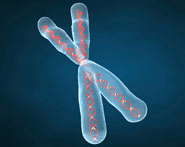


 النبات
النبات
 الحيوان
الحيوان
 الأحياء المجهرية
الأحياء المجهرية
 علم الأمراض
علم الأمراض
 التقانة الإحيائية
التقانة الإحيائية
 التقنية الحيوية المكروبية
التقنية الحيوية المكروبية
 التقنية الحياتية النانوية
التقنية الحياتية النانوية
 علم الأجنة
علم الأجنة
 الأحياء الجزيئي
الأحياء الجزيئي
 علم وظائف الأعضاء
علم وظائف الأعضاء
 الغدد
الغدد
 المضادات الحيوية
المضادات الحيوية|
Read More
Date: 6-12-2015
Date: 17-4-2021
Date: 5-6-2021
|
BiP (Hsp70)
The acronym BiP stands for binding protein, and it is the only member of the hsc,hsp70 family known to occur in the lumen of the endoplasmic reticulum (ER) of mammalian cells. It was identified originally as an ER protein that increases in amount when cells are starved of glucose (1(and subsequently as a protein that binds noncovalently to the heavy (H) chains of immunoglobulins as they enter the ER lumen (2). The alternative term of “Grp78” stands for glucose-regulated protein with an apparent subunit mass of about 78 kDa. BiP is now regarded as having a general molecular chaperone role for transport in the ER lumen and for protein folding in vivo. BiP proteins are highly conserved in mammals, and there is 67% identity between mouse BiP and a homologue in the ER lumen of Saccharomyces cerevisiae called “Kar2p” (3). Like all hsc,hsp70 proteins, BiP exhibits a weak ATPase activity.
1.Structure
BiP is encoded in a nuclear gene located on human chromosome 9q34, and cDNA from mammalian species indicate a primary translation product of 635 amino acid residues, including an 18-residue N-terminal signal sequence for ER targeting and the C-terminal tetrapeptide KDEL sequence for ER retention (GenBank accession numbers M19645 and M17169). The N and C termini contain clusters of acidic residues thought to be involved in Ca2+ binding (4). No crystal structure is available for mammalian BiP, but a structure is known for the N-terminal 45-kDa fragment of bovine hsc70, which retains the ATPase activity (5), and for the C-terminal polypeptide-binding domain of the Escherichia coli hsp70 homologue called DnaK (6). Purification protocols for BiP utilize affinity chromatography on ATP columns (7). Recombinant hamster BiP has been purified from E. coli cells (8) and is marketed by StressGen Biotechnologies Corporation, as are polyclonal antibodies to rodent BiP. In vivo BiP exists in interconvertible oligomeric and monomeric forms and is subject to phosphorylation on serine and threonine residues, as well as to ADP-ribosylation. However, only monomeric, unmodified species of BiP are found in complexes with unfolded or unassembled polypeptides (9).
2. Function
BiP binds transiently to a range of newly synthesized secretory proteins, as they traverse the ER membrane and enter the ER lumen, and more permanently to misfolded, underglycosylated, or unassembled proteins whose transport from the ER is blocked (10); it does not bind to native, folded proteins. The binding is reversed by the addition of ATP and is believed to exert a molecular chaperone function by preventing premature folding and/or aggregation; this function is achieved by the shielding of potentially interactive hydrophobic surfaces during the time when BiP is bound. There is also evidence that the BiP homologue in yeast functions as a molecular motor protein to promote the transport of proteins across the ER membrane (11). This transport function requires the binding of the BiP homologue to the J domain of the yeast ER membrane protein Sec63p (12). Studies of the binding of synthetic peptides and bacteriophage peptide libraries show that the optimum peptide length for binding is seven to eight residues, with extensive sequence diversity but a marked preference for hydrophobic residues (13, 14). These observations support the idea that BiP binds to a wide range of sequences that normally occur inside fully folded proteins. A computer program is available that scores potential BiP binding sites in protein sequences (14); it has been used to map such sequences in immunoglobulin heavy chains to the regions that interact with light chains (15).
3.Interaction with Other Chaperones
Cytosolic hsc,hsp70 proteins in the bacterial and eukaryotic cytosol interact with other chaperones of the DnaJ (or hsp40) family that contain J domains. The yeast BiP homologue, Kar2p, interacts with two other ER proteins that contain J domains: Sec63p, a membrane protein involved in protein translocation across the ER membrane (16); and Scj1p, a lumenal protein (17). BiP also binds either sequentially or simultaneously with chaperones such as calnexin and Grp94 during the folding in the ER of proteins such as immunoglobulin light (L(chains (18), thyroglobulin (19), vesicular stomatitis virus G protein (20), and major histocompatibility complex class II chains (21). BiP is thus one component in a complex set of interactions in the ER lumen between different chaperones and polypeptide chains that are folding.
4.Induction of BiP
BiP is an abundant protein under normal growth conditions, constituting about 5% of the ER lumenal proteins, but its amount increases greatly under conditions that result in the accumulation of proteins within the ER lumen that are unable to fold correctly. These conditions include the biosynthesis of mutant chains, glucose starvation, and treatment with amino acid analogs, drugs that inhibit glycosylation, and calcium ionophores (22). The promoters of BiP genes in mammals contain several cis-acting regulatory elements required for high basal-level expression and for inducibility (22, 23).
References
1.J. Pouyssegur, R. P. C. Shiu, and I. Pastan (1977) Cell 11, 941–947.
2.I. G. Haas and M. Wabl (l983) Nature 306, 387–389.
3.K. Normington, K. Kohno, Y. Kozutsumi, M. J. Gething, and J. Sambrook (l989) Cell 57, 1223-1236.
4.D. R. J. Macer and G. L. E. Koch (1988) J. Cell. Sci. 91, 61–70.
5.K. M. Flaherty, C. DeLuca-Flaherty, and D. B. McKay (1990) Nature 346, 623–628.
6. X. Zhu, X. Zhao, W. F. Burkholder, A. Gragerov, C. M. Ogata, M. E. Gottesman, and W. A. Hendrickson (l996) Science 272, 1606–1614.
7.P. J. Rowling, S. H. McLaughlin, G. S. Pollock, and R. B. Freedman (1994) Protein Exp. Purif. 5,331-336.
8.J. Wei and L. M. Hendershot (1995) J. Biol.Chem. 270, 26670–26676.
9. P. J. Freiden, J. R. Gaut, and L. M. Hendershot (1992) EMBO J. 11, 63–70.
10.M. J. Gething, S. Blond-Elguindi, K. Mori, and J. F. Sambrook (1994) in The Biology of Heat Shock Proteins and Molecular Chaperones (R. I. Morimoto, A. Tissieres and C. Georgopoulos, eds.), Cold Spring Harbor Laboratory Press, Cold Spring Harbor, pp. 111–135.
11.S. Panzner et al. (1994) Cell 81, 561–570.
12. J. L. Brodsky and R. Schekman (1993) J. Cell Biol. 123, 1355–1363.
13.G. C. Flynn, J. Pohl, M. T. Flocco, and J. E. Rothman (1991) Nature 353, 726–730.
14.S. Blond-Elguindi, S. E. Cwirla, W. J. Dower, R. J. Lipshutz, S. R. Sprang, J. F. Sambrook, and M. J. Gething (1993) Cell 75, 717–728.
15.G. Knarr, M. J. Gething, S. Modrow, and J. Buchner (1995) J. Biol. Chem. 270, 27589–27594.
16.D. Feldheim, J. Rothblatt, and R. Schekman (1992) Mol. Cell. Biol. 12, 3288–3296.
17.G. Schlenstedt, S. Harris, B. Risse, R. Lill, and P. A. Silver (1995) J. Cell Biol. 129, 979–988.
18.J. Melnick, J. L. Dul, and Y. Argon (1994) Nature 370, 373–375.
19. P. S. Kim and P. Arvan (1995) J. Cell Biol. 128, 29–38.
20.C. Hammond and A. Helenius (1994) Science 266, 456–458.
21.M. S. Marks, R. N. Germain, and J. S. Bonifacino (1995) J. Biol. Chem. 270, 10475–10481.
22.A. S. Lee (1992) Curr. Opin. Cell Biol. 4, 267–273.
23. W. W. Li, L. Sistonen, R. I. Morimoto, and A. S. Lee (1994) Mol. Cell. Biol. 14, 5533–5546.



|
|
|
|
لمكافحة الاكتئاب.. عليك بالمشي يوميا هذه المسافة
|
|
|
|
|
|
|
تحذيرات من ثوران بركاني هائل قد يفاجئ العالم قريبا
|
|
|
|
|
|
|
العتبة العباسية تشارك في معرض النجف الأشرف الدولي للتسوق الشامل
|
|
|